How does vertical speed compare between different mountain sports?
And how does slope angle affect that speed?
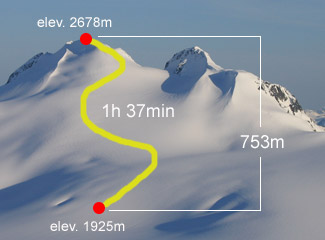 These are very interesting questions to which no one has an absolute answer for. I am going to take a shot at it while relying on my knowledge and experience in both ski mountaineering (skimo) and uphill running.
These are very interesting questions to which no one has an absolute answer for. I am going to take a shot at it while relying on my knowledge and experience in both ski mountaineering (skimo) and uphill running.
Here is a summary of conclusions from my “study”, but if you have 20min then read on, it’s worth it. Also, share your opinion in the comments below, thus we can all learn even more.
The most efficient angle for:
-
skinning for guided clients is believed to be 12 degrees.
-
skinning for trained athletes is 13-16 degrees.
-
skimo and uphill running isn’t the same.
-
skinning is lower than the one for uphill running.
Why this topic? Why now?
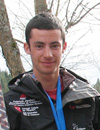
The athlete’s name is Kilian Jornet Burgada. He is a 21-year-old phenomenon from Catalonia (Spain) that wins races over any distance, from 30min bursts to 30h mountain marathons, whether on skis or in running shoes. If he is a new name for you then check out his results on Wikipedia – Kilian Jornet Burgada.
The second athlete I will be talking about is Sebastian Selas. I will introduce him further down.
Comparison data – raw race facts
The races (performances) I am going to use for my comparison are:
-
2009 vertical race at European Ski Mountaineering Championships (Italy)
-
2007 1km vertical uphill running race (Switzerland)
-
2009 Grouse Grind Mountain Run (Canada)
The conclusions I am going to draw (or not) in this article come from pure facts I could find and know about these races and athletes, and from my personal experience.
I chose the three races/two athletes for couple of reasons:
-
two of the races were raced by the same athlete in two different disciplines
-
all three races are of very similar vertical gain
-
times at two races stand as course records
-
all three races take place at an arguably low altitude (not going over 2000m)
-
both athletes seem to be quite gifted in terms of vertical racing
-
both athletes are about the same age, 21 and 22
Vertical race at European Ski Mountaineering Championships 2009 (Feb 20, 2009 – Alepago, Italy)
Elevation gain: 835m
Distance: 3800m
Course altitude: 980m – 1815m
Time: 35min 51sec
Winner: Kilian Jornet Burgada
Website: Alpago 2009
“Vertical kilometre” race 2007 (Oct 27, 2007 – Fully, Switzerland)
Elevation gain: 1000m
Distance: 1920m
Course altitude: 500m – 1500m
Time: 31min 52sec (course record – unofficial world record for one vertical km)
Winner: Kilian Jornet Burgada
Website: Team La Trace
Grouse Grind race 2009 (Sep 20, 2009 – Vancouver, BC, Canada)
Elevation gain: 853m
Distance: 2900m
Course altitude: 270m – 1120m
Time: 25min 24sec (course record)
Winner: Sebastian Selas
Website: Grouse Grind
Ski mountaineering vs uphill running
Since we have the same athlete winning in both disciplines we will go straight to differences between the two mountain sports.
Obvious disadvantage in skimo racing versus trail running is gear weight, especially the weight an athlete carries on his feet as that restricts his leg speed (frequency) the most. Of course, we can compare the clothing and pack weight as well, but I am not going to do it as I don’t believe that weight (about 1.5-2kg difference in this case) affects us as much as what’s on our feet.
Here, just out of curiosity, are the weights per foot:
-
super light running shoe is about 200g
-
super light ski, bidding and a ski boot combination is about 1350g
-
a difference of 1100g
-
pole weight doesn’t matter since Kilian used poles at both races
Skimo vertical race analysis
Based on the raw race facts Kilian’s average vertical speed for the vertical European Skimo Championships was:
23.29 m/m (metres per minute) = 1397.4 m/h (metres per hour)
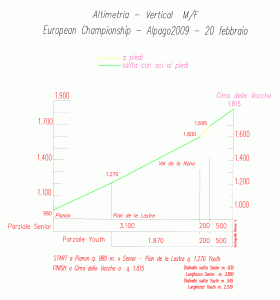
A super fast boot-pack bottom transition takes around 15-20s and the top one about the same.
According to summary articles of that race Kilian had troubles with his boot-pack bottom transition, so it took him longer than usual, and almost lost a race there.
Kilian’s winning time over the 835m was 35min 51sec but after deducting transitions times I feel comfortable at settling with a time of 35min flat.
That would mean his actual average vertical speed when he was moving was:
23.86 m/m (metres per minute) = 1431.4 m/h (metres per hour)
1. This means it would take him 41min 55sec to skin up 1000m (vertical) if the course would continue and he would keep the same speed.
2. Kilian’s pace in this race was 9min 13sec per kilometre. This is a pace road runners calculate, so it is not a vertical kilometre but a normal one.
Since the 23.86 m/m is the “unbiased” speed (without transitions) we can compare it with his running race as there are no transitions in that discipline.
Uphill running 1km vertical race analysis
Again, based on the raw race facts Kilian’s average vertical speed for the vertical kilometre race in Switzerland was:
31.38 m/m (metres per minute) = 1882.8 m/h (metres per hour)
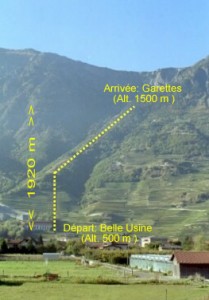
2. Kilian’s pace in this race was 16min 35sec per kilometre which is much slower than in the skimo race.
In the race, he had to pass a couple of slower competitors, but I don’t think this affects the comparison of the two disciplines too much.
The uphill run was done as a time trial and the skimo vertical race had a mass start. So passing few racers versus fighting in the mass start cancels the factors out.
Comparison – vertical skimo and uphill running races
Here is a conclusion to the first question, “How does vertical speed compare between different mountain sports?”:
We can clearly see that Kilian’s vertical uphill running speed is way faster than the one reached at a ski mountaineering race. This should be no surprise as equipment weight plays an important role. Therefore, of course, this is a bit of comparing apples to oranges, yet it is still interesting to see the numbers.
Also, there is a fact of two years between the two races. In that time Kilian got faster for sure as he proved it at many ski mountaineering races. However, he is running virtually the same time over the vertical kilometer race (at the same venue) past three years, between 2006 and 2008.
Therefore, I consider his record the best time in the world over one vertical kilometre that is not getting any faster at the moment. The vertical kilometre race is still due this year, so we shall see (Oct 24, 2009).
Another factor to consider and compare is the slope angle, which we will get a better comparison lower down when comparing running with running:
The skimo vertical race gained 835m over 3800m which means a slope of 12.69 degrees or 22.52%. Compare this to the uphill run and a 1000m gain over 1920m which means a slope of 31.39 degrees or 61.01%.
Two interesting facts to compare are Kilian’s vertical speeds and his paces per kilometre as they go in the opposite dirrection – smaller vertical speed with faster pace versus higher vertical speed with slower pace.
Skimo race:
-
vertical speed is 1431.4 m/h
-
pace is 9min 13sec / normal kilometre
Uphill run:
-
vertical speed is 1882.8 m/h
-
pace is 16min 35sec / normal kilometre
Vertical speed and slope angle – running vs running
To answer the second question, “How does slope angle affect vertical speed?”, I didn’t use the same athlete as I couldn’t find enough facts about other Kilian’s vertical races. Instead, I opted to use a race that I know the course of very well; therefore, allowing me for somewhat “accurate conclusions”.
Also, the follow up question should be: “Which incline angle is the most efficient and the fastest to climb at?”. I’ll take a stab at this too, for now lets go back to the second uphill running race.
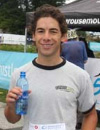
The Grouse Grind Mountain Run in North Vancouver in BC, Canada is a very popular uphill race that is regularly attended by very strong athletes; however, no European speedsters have came to check it out yet.
This year (2009) the record was set to an incredible 25min 24sec for gaining 853m over 2900m.
The winner was a 22-year-old local Vancouverite, Sebastian Selas, who is an amateur triathlete and cyclist. Judging by his time, I believe Sebastian would be a serious match to Kilian’s climbing abilities.
But lets look at some numbers, to see how a different angle affects the vertical speed and pace.
Sebastian’s average vertical speed when climbing Grouse Grind trail was:
33.58 m/m (metres per minute) = 2014.8 m/h (metres per hour)
Sebastian’s pace in this race was 8min 46sec per kilometre which is 27sec faster than Kilian’s skimo race pace and 8min faster than his vertical kilometre race pace.
The Grouse Grind race starts in waves that are seeded based on runners’ honest expected time estimates. It starts and finishes with a bit of a flat, around 150-200m in total which should account for about 25-30sec in total. So if we subtract 24sec (which gives us a time of 25min flat) we arrive at an average vertical speeds of:
34.12 m/m (metres per minute) = 2047.2 m/h (metres per hour)
1. Based on the second speed, it would take Sebastian 29min 19sec to run up 1000m (vertical) if the Grouse Grind trail (race course) would continue and he would keep the same speed.
2. Sebastian’s pace in this race was 8min 46sec per kilometre. Using 2.9km here and not sub-subtracting the 150-200m since I am calculating runners pace.
Even though we are not comparing the two athletes on those two specific courses, I think, it is very safe to assume that they are both world class uphill runners for efforts of up to 30-35min, and likely even longer.
Now, lets take a look at the slope angles of the two uphill running races:
Kilian’s vertical kilometer race average slope angle was 31.39 degrees (61.01%), compared to the Grouse Grind’s trail average angle of 18.07 degrees (32.63%) – instead of 2900m, I used 2750m as the actual course length due to the flat start (even downhill) and finish sections to calculate the angle.
The Swiss 1km vertical kilometer race is run straight up, doesn’t let up a bit; whereas the Grind has some switchbacks with low angle incline that allow for some recovery, or at least allow to pick up leg speed again.
One last thing to note here is that Sebastian did not use poles for his run and Kilian did. I believe, both knew what they were doing and picked the right tools for the slope angle they were facing or technique they are using.
Conclusion and an example – slope angles, speed and efficiency
Based on this “study” of mountain uphill running and skimo climbing, and my experience in both disciplines, I am comfortable to say that steeper doesn’t mean faster. However, the more important question is: “Which incline angle is the most efficient and the fastest to climb at?”
To answer that, I can only speculate based on my experience, as would most likely anyone else based on his. But we can clearly see that Sebastian was able to produce an average vertical speed of about 150 m/h (metres per hour) higher than Kilian in his race. This is about 8-9% faster than Kilian’s vertical running speed.
Also, Sebastian’s pace (time per kilometre) values are much more faster than Kilian’s. Sebastian was doing 8min 46sec per KM versus Kilian’s 16min 35sec per KM; that is almost 90% faster pace.
That leads me to say that Grouse Grind’s slope angle is more efficient (18.07 degrees) than the one in Switzerland (31.39 degrees). And that the most efficient angle is somewhere in between the angles of the two courses, while personally leaning more towards the incline values of the Grouse Grind.
But since the techniques of climbing (due to terrain and equipment) in ski mountaineering and uphill running are quite different we should not assume that the most efficient angle for both disciplines is the same.
Based on my experience, I would speculate that the most efficient and the fastest angle for skinning is lower than the one for uphill running.
I believe that in uphill running you can sustain your most efficient leg speed on a steeper slope over a longer period of time than while climbing on skis. This has very much to do with equipment weight and leg speed (and technique).
In fact, you can see this if we compare the paces per KM and vertical speeds:
Kilian went at a slower pace (9min 13sec / KM) and at a slower vertical speed (1431.4 m/h) on a lower angle course (12.69 degrees) when compared to Sebastian’s 8min 46sec / KM, 2047.2 m/h speed, and 18.07 degrees angle slope.
To demonstrate this without calculations here is an example:
Imagine running on a flat ground wearing a 400g pair of shoes (200g per foot). You run for 1km flat-out and record your time and you count your steps.
Now you do the same with a 2700g pair of shoes (1350g per foot). Your time will be slower and you will most likely (absolutely sure about this) do more steps. If you manage to keep the same number of steps you will be even slower.
Without going in more detail about step frequency (because it’s a very individual thing) the example demonstrates you had a lower average speed while running with heavier shoes.
Translating this onto a 20 or 30 degree slope would show at least the same difference. Running with heavier shoes at the same vertical speed, with the same leg turn-over (leg speed) would tire you way faster than lighter shoes.
Subsequently, if you would want to keep the same vertical speed on the same incline you would have to change something – and that is either a faster leg turn-over or have lighter shoes (equipment).
If you don’t trust my example, go and try it out, but before you run around your house in ski boots make sure your neighbors know about the experiment, otherwise they might call for help 😉 and hopefully you don’t think I am crazy for writing all this 🙂
As for ski mountaineering skin track angles, mountain guides are thought to set about 12 degree tracks for their clients, so it must be believed by the experienced ones this angle to be the most efficient angle for most of the clients. The slope angle of Kilian’s skimo vertical race was just over 12 degrees as well.
However, I believe that trained athletes have their most efficient and the fastest skinning angle a bit steeper than average Joe. I would estimated it at about 13-16 degrees.
Now, what’s left to do is to either get Kilian run the Grouse Grind next year or get Sebastian to go to Switzerland for this years race (Oct 24, 2009), so we can truly compare the two machines and have more consistent data.
I hope you enjoyed this article and you are welcome to share your opinion on this topic in the comments below.

